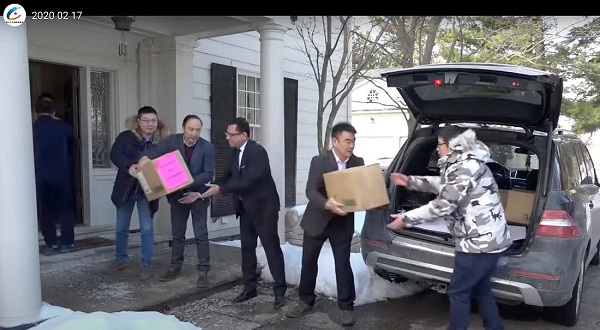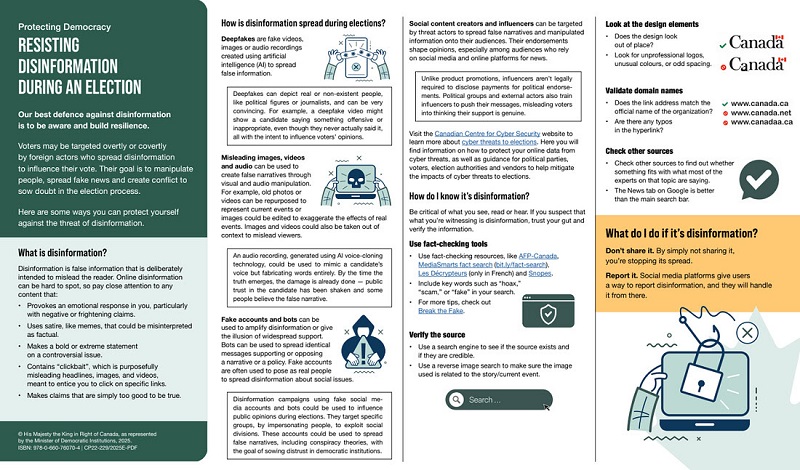Alberta
Albertans encouraged to wear cloth masks in public: easy tips and links on “How To” make your own

It is not the law, but Canada and Alberta have agreed with the idea that wearing a homemade cloth mask might help in the spreading the coronavirus, especially when it is hard to maintain the 2-metre physical distancing when in public.

Remember that the medical grade masks are for front-line care workers, medical staff and first responders. Photo/CANADIAN PRESS
Unlike many Asian countries where a lot of the population regularly wear masks in public, in Western counties wearing a mask in public is not as easily accepted by the majority of the population. One unproven theory is that images of the face masks, conjure up ideas of the bad guys, bank robbers, the wild west’s banditos all wear cloth face covers.
![]() Not pulling any punches, virologist and immunologist, George Gao told ScienceMagazine.org, “The big mistake in the U.S. and Europe – is that people aren’t wearing masks.”
Not pulling any punches, virologist and immunologist, George Gao told ScienceMagazine.org, “The big mistake in the U.S. and Europe – is that people aren’t wearing masks.”

George Gao
Gao is the director-general of the Chinese Center for Disease Control and Prevention, “This virus is transmitted by droplets and close contact. You’ve got to wear a mask, because when you speak, there are always droplets coming out of your mouth – masks, can prevent droplets that carry the virus from escaping and infecting others.” Across Asian countries the populations are onboard that, “there are an unknown number of people that are asystematic, carrying the coronavirus and they do not even know it.” So, in the spirit of a country’s solidarity, “there is a need to protect others from yourself.”
In recent weeks countries have seen the stats and cannot ignore the lower numbers of infected in mask wearing countries like, South Korea, Taiwan, Japan, Singapore, the region of Hong Kong and China has also now flatted the curve and have loosed up on the city military lockdowns.
Recently passing laws that make it mandatory to wear a face mask in public are the Czech, Slovakia, Indonesia and the Philippines. On April 3rd, US President Donald Trump, announced that the Centers for Disease Control and Prevention (CDC) is recommending, on a voluntary basis, that Americans wear “non-medical cloth” face coverings.
In Canada Chief public health officer Dr. Theresa Tam has changed her view and is now saying, “Wearing a non-medical mask, even if you have no symptoms, is an additional measure that you can take to protect others around you in situations where physical distancing is difficult to maintain, such as in public transit or maybe in the grocery store.”
In Alberta, the view has also changed on the general public wearing mask in public. Leading off with the premier Kenney, who has seen countries that have been successful in keeping the transmission of COVID-19 down, have all had widespread use of facemasks. Alberta’s Chief Medical Officer of Health, Dr. Deena Hinshaw said at a press conference, “What we know is that people who are sick spread illness – wearing a non-medical mask, such as a homemade cloth mask, has not been proven to protect the person who is wearing it,” but added, “However, it may be helpful in protecting others around you.”
The Alberta government wants people to follow these rules, even when wearing face coverings in public.
- Continue to follow all other public health guidance (staying two metres away from others, wash hands regularly, stay home when sick).
- Avoid touching your face and mask while using it.
- Wash hands before putting on a mask, then before and after removing it.
- Clean a cloth mask as soon as it gets damp or soiled.
- Put it directly in the washing machine or a sealed bag that can be emptied into the washing machine and then be disposed of.
- Cloth masks can be laundered with other items using a hot cycle, then dried in the dryer at the highest temperature setting.
- Medical masks can’t be washed and should be discarded and replaced as soon as they get damp, soiled or crumpled.
- Dispose of these masks in a lined garbage bin.
- Do not share masks with others.
There are many online resources where you can easily make a cloth mask with or without a sewing machine.
- CDC has a page with easy instructions; https://www.cdc.gov/coronavirus/2019-ncov/prevent-getting-sick/diy-cloth-face-coverings.html
- Japanese Creations on YouTube has two great “How To” videos. One has 1.5+ million views already. The second one has good tips to help glasses from fogging up, using some tin foil and a piece of tissue. Both without the need for a sewing machine. https://www.youtube.com/channel/UCyxl_I7lKw-bjUz3ECa_jwg
- Youtuber Danysska from the Czech republic has a very easy how to do instructions on how to make a cloth mask with no sewing; https://www.youtube.com/watch?v=LMwkTLGONOg
- The Surgeon General for the US, Dr. Jerome Adam has an easy to follow “how-to” video on how to make a face mask, with-out a sewing machine.
- With over 1.7+ million views, HomeMadeOnOurHomestead, has a good how to sew a reusable face mask with a filter pocket; https://www.youtube.com/watch?v=zm_NmpdgWWA
- Thoughtful Creativity 1.5+ million views on her tutorial on how to make cloth face masks in a batches using a sewing machine. https://www.youtube.com/watch?v=FW1TCQDN4do
- Kim’s Kitchen Affair has over 1.4+ million views on her DIY on how to sew a reusable pleated face mask with nose bridge and Filter Pockets in just 5 Minutes. https://www.youtube.com/watch?v=9K4dH3-LHLQ
- From prixprix on com by step with photo instructions on a, No-Sew T-shirt Face Mask www.instructables.com/id/No-Sew-T-shirt-Face-Mask/
Click here to read more on Todayville Edmonton.
Alberta
Made in Alberta! Province makes it easier to support local products with Buy Local program

Show your Alberta side. Buy Local. |
When the going gets tough, Albertans stick together. That’s why Alberta’s government is launching a new campaign to benefit hard-working Albertans.
Global uncertainty is threatening the livelihoods of hard-working Alberta farmers, ranchers, processors and their families. The ‘Buy Local’ campaign, recently launched by Alberta’s government, encourages consumers to eat, drink and buy local to show our unified support for the province’s agriculture and food industry.
The government’s ‘Buy Local’ campaign encourages consumers to buy products from Alberta’s hard-working farmers, ranchers and food processors that produce safe, nutritious food for Albertans, Canadians and the world.
“It’s time to let these hard-working Albertans know we have their back. Now, more than ever, we need to shop local and buy made-in-Alberta products. The next time you are grocery shopping or go out for dinner or a drink with your friends or family, support local to demonstrate your Alberta pride. We are pleased tariffs don’t impact the ag industry right now and will keep advocating for our ag industry.”
Alberta’s government supports consumer choice. We are providing tools to help folks easily identify Alberta- and Canadian-made foods and products. Choosing local products keeps Albertans’ hard-earned dollars in our province. Whether it is farm-fresh vegetables, potatoes, honey, craft beer, frozen food or our world-renowned beef, Alberta has an abundance of fresh foods produced right on our doorstep.
Quick facts
- This summer, Albertans can support local at more than 150 farmers’ markets across the province and meet the folks who make, bake and grow our food.
- In March 2023, the Alberta government launched the ‘Made in Alberta’ voluntary food and beverage labelling program to support local agriculture and food sectors.
- Through direct connections with processors, the program has created the momentum to continue expanding consumer awareness about the ‘Made in Alberta’ label to help shoppers quickly identify foods and beverages produced in our province.
- Made in Alberta product catalogue website
Related information
Alberta
Province to expand services provided by Alberta Sheriffs: New policing option for municipalities

Expanding municipal police service options |
Proposed amendments would help ensure Alberta’s evolving public safety needs are met while also giving municipalities more options for local policing.
As first announced with the introduction of the Public Safety Statutes Amendment Act, 2024, Alberta’s government is considering creating a new independent agency police service to assume the police-like duties currently performed by Alberta Sheriffs. If passed, Bill 49 would lay additional groundwork for the new police service.
Proposed amendments to the Police Act recognize the unique challenges faced by different communities and seek to empower local governments to adopt strategies that effectively respond to their specific safety concerns, enhancing overall public safety across the province.
If passed, Bill 49 would specify that the new agency would be a Crown corporation with an independent board of directors to oversee its day-to-day operations. The new agency would be operationally independent from the government, consistent with all police services in Alberta. Unlike the Alberta Sheriffs, officers in the new police service would be directly employed by the police service rather than by the government.
“With this bill, we are taking the necessary steps to address the unique public safety concerns in communities across Alberta. As we work towards creating an independent agency police service, we are providing an essential component of Alberta’s police framework for years to come. Our aim is for the new agency is to ensure that Albertans are safe in their communities and receive the best possible service when they need it most.”
Additional amendments would allow municipalities to select the new agency as their local police service once it becomes fully operational and the necessary standards, capacity and frameworks are in place. Alberta’s government is committed to ensuring the new agency works collaboratively with all police services to meet the province’s evolving public safety needs and improve law enforcement response times, particularly in rural communities. While the RCMP would remain the official provincial police service, municipalities would have a new option for their local policing needs.
Once established, the agency would strengthen Alberta’s existing policing model and complement the province’s current police services, which include the RCMP, Indigenous police services and municipal police. It would help fill gaps and ensure law enforcement resources are deployed efficiently across the province.
Related information
-
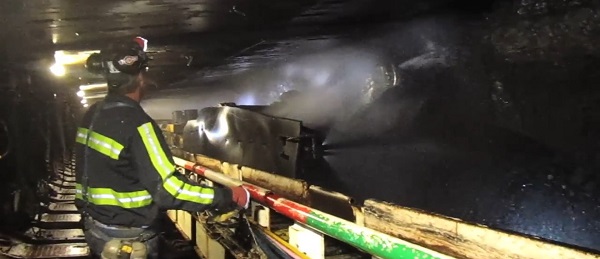
 Daily Caller1 day ago
Daily Caller1 day agoTrump Executive Orders ensure ‘Beautiful Clean’ Affordable Coal will continue to bolster US energy grid
-

 2025 Federal Election1 day ago
2025 Federal Election1 day agoBREAKING from THE BUREAU: Pro-Beijing Group That Pushed Erin O’Toole’s Exit Warns Chinese Canadians to “Vote Carefully”
-
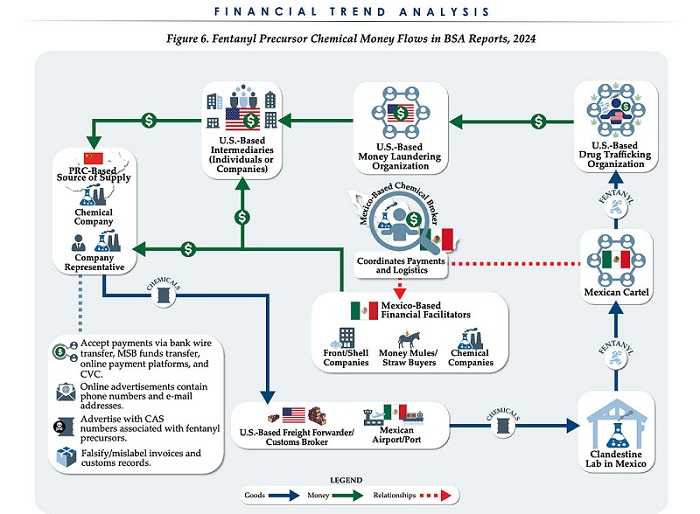
 Business1 day ago
Business1 day agoChina, Mexico, Canada Flagged in $1.4 Billion Fentanyl Trade by U.S. Financial Watchdog
-

 COVID-191 day ago
COVID-191 day agoTamara Lich and Chris Barber trial update: The Longest Mischief Trial of All Time continues..
-

 2025 Federal Election2 days ago
2025 Federal Election2 days agoTucker Carlson Interviews Maxime Bernier: Trump’s Tariffs, Mass Immigration, and the Oncoming Canadian Revolution
-
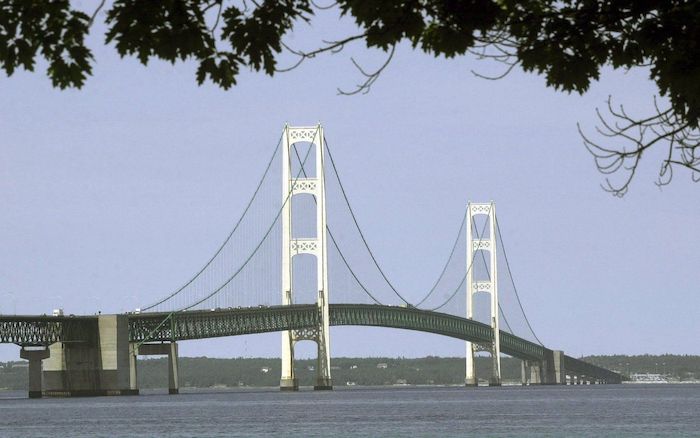
 Energy1 day ago
Energy1 day agoStraits of Mackinac Tunnel for Line 5 Pipeline to get “accelerated review”: US Army Corps of Engineers
-
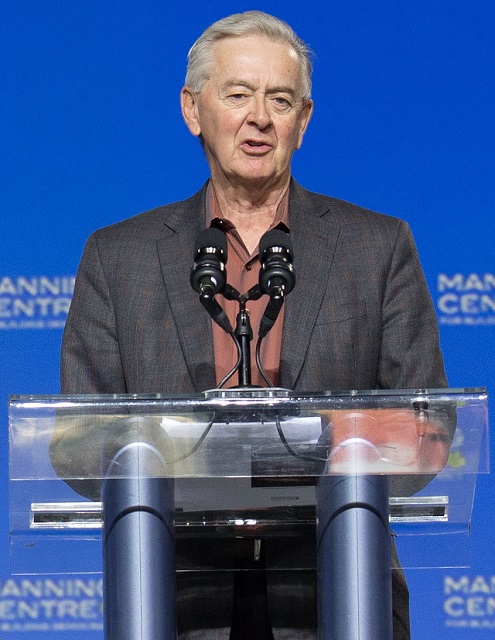
 2025 Federal Election1 day ago
2025 Federal Election1 day agoAllegations of ethical misconduct by the Prime Minister and Government of Canada during the current federal election campaign
-

 Business2 days ago
Business2 days agoDOGE Is Ending The ‘Eternal Life’ Of Government




